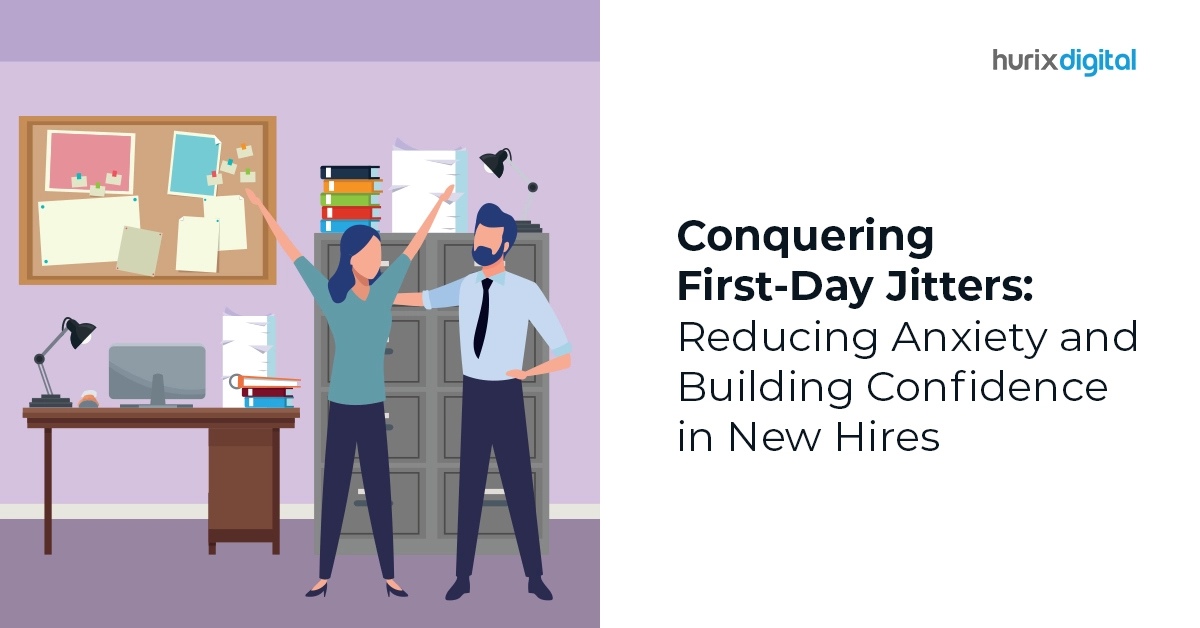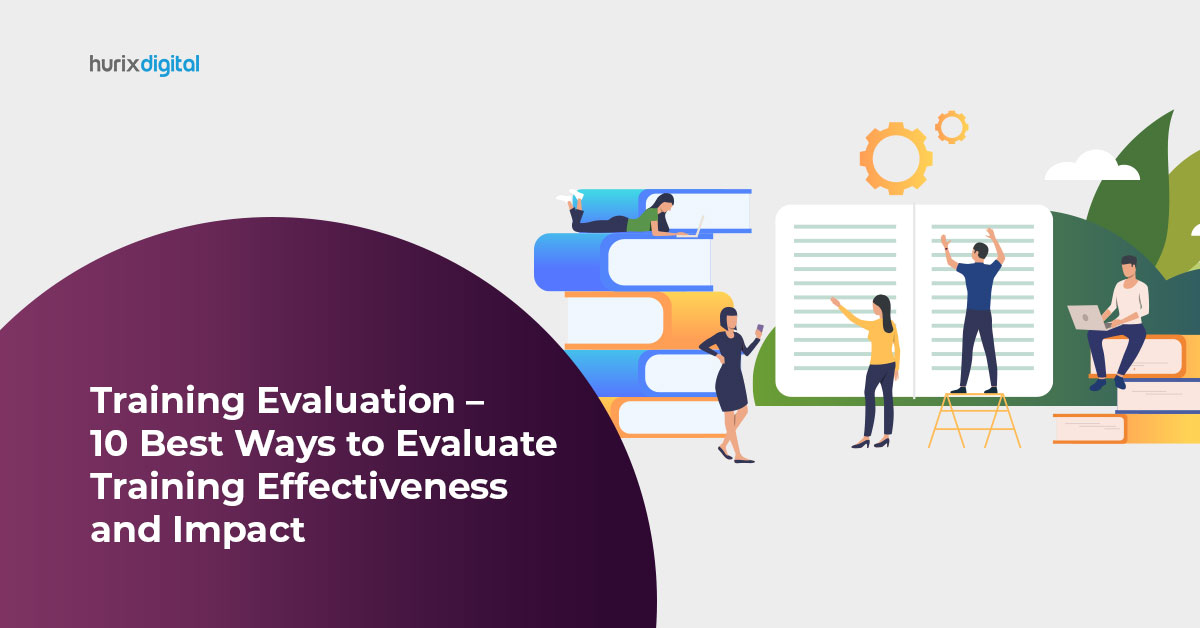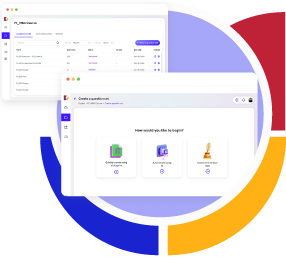
Conquering First-Day Jitters: Reducing Anxiety and Building Confidence in New Hires
Walking into a workplace for the first time can feel like stepping onto a brightly lit stage. Those familiar butterflies in your stomach, sweaty palms, and racing heartbeat are all signs of those unnerving first-day jitters.
While starting a job is undoubtedly exciting, it can also be incredibly anxiety-inducing. Recent research indicates that 62% of newcomers experienced reduced anxiety levels when they went through a structured onboarding process on their first day.
These anxieties can hinder performance, making it critical to tackle them early on for the new employee orientation and onboarding programs to work together in conquering these jitters and fostering a confident start.
That’s where we come in to assist you in conquering those first-day nerves and ensuring that your fresh recruits are set up for success. We’ll delve into onboarding strategies and employee orientation programs specifically designed for employees, as well as tips to boost their confidence so that they feel at ease, supported, and ready to shine right from day one.
Table of Contents:
- Why is a Robust Onboarding Plan a Necessity?
- Quick Tips to Make New Employees Feel Welcome
- How can Employee Welcome Programs Reduce Workplace Anxiety?
- Strategic Investment in Onboarding Programs is a Rewarding Experience
- In Conclusion
Why is a Robust Onboarding Plan a Necessity?
Having an onboarding experience goes beyond being a nicety; it plays a crucial role in retaining and engaging employees. Studies have revealed that companies lacking onboarding programs report that 74% of employees who were ready to leave felt disconnected from the experience. This means that a negative onboarding experience can lead to high turnover rates, damage the company culture, and hinder productivity.
A seamless onboarding process encompasses more than just paperwork and introductions; it forms the basis for cultivating productive and loyal employees. First impressions hold weight, and a positive onboarding journey sets the tone for an employee’s tenure with your organization. It fosters a sense of belonging, reduces anxiety levels, and equips employees with the knowledge, skills, and confidence to excel.
On the other hand, an unorganized or underwhelming onboarding process may leave hires feeling disoriented, frustrated, and questioning their decision to join the company. Investing in a designed program ensures that we provide hires with a positive initial step toward building a successful relationship that benefits both parties.
Here are some key strategies:
1. Pre-boarding: Set the Stage for Success
- Welcome package: Send a personalized welcome package with company information, branded swag, and a handwritten note from the manager.
- Pre-boarding tasks: Assign simple tasks like completing paperwork or accessing online resources to get new hires familiar with the company culture and processes.
- Connect via video call: Schedule a pre-boarding video call with the manager or team to introduce themselves and answer any initial questions.
2. First-Day Jitters: Moving Ahead with Confidence
- Warm welcome: Have the manager and team members greet the new hire personally at the door.
- Structured orientation: Provide a clear and comprehensive overview of the company, team, role, and expectations.
- Buddy system: Assign a friendly and experienced colleague as a buddy to show the new hire around and answer questions throughout the day.
- Lunch with the team: Encourage informal interactions by inviting the new hire to lunch with their team on the first day.
3. Employee Onboarding Journey: Making it Past the Door
- Regular check-ins: Schedule regular one-on-one meetings with the manager to provide feedback, answer questions, and address any concerns.
- Mentorship program: Pair new hires with experienced mentors who can offer guidance and support throughout their onboarding journey.
- Training and development opportunities: Provide ongoing training and development opportunities to help new hires acquire the skills and knowledge they need to succeed in their role.
- Social events and team-building activities: Organize social events and team-building activities to help new hires build relationships with their colleagues and feel part of the team.
Also Read: Revolutionizing Employee Training: Exploring the Latest Trends in Corporate Learning Platforms
Quick Tips to Make New Employees Feel Welcome
Beyond implementing these onboarding best practices, employers can also focus on building confidence in their new hires. Here are some tips:
- Highlight achievements: Recognize and celebrate the new hire’s accomplishments, no matter how small.
- Provide positive feedback: Offer constructive feedback positively and encouragingly.
- Empowerment and autonomy: Delegate tasks and give new hires opportunities to take ownership of their work.
- Open communication: Foster an open and transparent communication culture where new hires feel comfortable asking questions and voicing their concerns.
How can Employee Welcome Programs Reduce Workplace Anxiety?
Structured employee welcome programs can play a significant role in reducing workplace anxiety and creating a more inclusive environment for new hires. These programs can offer:
- Ice-breaker activities: Fun and interactive activities to help new hires break the ice and get to know their colleagues.
- Company culture workshops: Sessions that introduce new hires to the company’s values, mission, and work environment.
- Stress management workshops: Tools and techniques to help new hires manage stress and anxiety in the workplace.
Strategic Investment in Onboarding Programs is a Rewarding Experience
Investing in onboarding programs can be a winning endeavor, for companies. By implementing practices that focus on integrating employees building their confidence and providing support organizations can ensure that their new hires feel welcomed and empowered to succeed. This leads to levels of employee satisfaction and improved retention rates. It ultimately contributes to a more productive and successful workplace.
The benefits of investing in an onboarding program go beyond doing right by your employees. It also translates into turnover, which means training costs and increased revenue for the company.
In addition to these benefits, a positive onboarding experience plays a role in enhancing the employer’s branding efforts. It helps attract talent while fostering a work environment that is appealing to skilled individuals. Overall, investing in onboarding creates a cycle where both employees and the organization thrive together.
Also Read: How & Why To Use AI for Employee Training and Development?
In Conclusion
Feeling nervous on the day of work is normal. It doesn’t have to overwhelm you. By acknowledging and managing your anxieties, you can approach your role with confidence and excitement.
Effective onboarding programs play a role in creating a supportive environment that boosts confidence and sets new employees up for success. By implementing strategies that promote communication, organizations can ensure that their new team members feel valued, engaged, and ready to excel.
Remember, overcoming first-day nerves requires collaboration. When both new employees and organizations work together, they can create a successful start to the employment journey. Don’t let first-day jitters hold you back!
At Hurix Digital we are committed to helping you overcome learning challenges and achieve success. Get in touch with us so we can discuss how our solutions can be tailored to meet your needs.

Performance, Results, Growth, and Life-Long Learning define my professional life. I am passionate about making workplace learning planful, purposeful, and impactful. I take pride in partnering with clients and bringing them the best in learning design and creating solutions that address business challenges.
 We’re live! Explore the all-new
We’re live! Explore the all-new 









